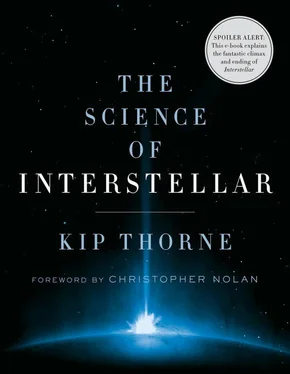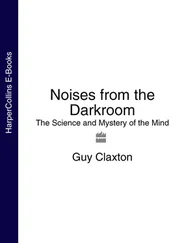What Does Cooper See Inside Gargantua?

Looking up as he falls inward, Cooper sees the external universe. Because his infall has been sped up, he sees time in the external universe flow at roughly the same rate as his own time, [51] In technical language, signals from above are Doppler shifted to the red by his high speed, which compensates the blue shift produced by the hole’s gravitational pull, so colors look fairly normal.
and he sees the image of the external universe reduced in size, [52] Due to abberration of the starlight.
from about half of the sky to roughly a quarter.
When I was first shown the movie’s depiction of this, I was pleased to discover that Paul Franklin’s team got it right, and also got right something I had missed: In the movie, the image of the universe above is surrounded by Gargantua’s accretion disk (Figure 28.3). Can you explain why this must be so?
Cooper sees all this above him, but he doesn’t see the infalling singularity. It is moving downward toward him at the speed of light, chasing but not catching the light rays that bring him images of the disk and universe above.
Because we are rather ignorant of what goes on inside black holes, I told Chris and Paul that I’d be comfortable if they used their imaginations in depicting what Cooper sees coming up at him from below, as he falls. I made only one request: “Please don’t depict Satan and the fires of Hades inside the black hole like the Disney Studios did in their Black Hole movie.” Chris and Paul chuckled. They weren’t tempted in the least.
When I saw what they did depict, it made great sense. Looking downward, Cooper should see light from objects that fell into Gargantua before him and are still falling inward. Those objects need not emit light themselves. He can see them in reflected light from the accretion disk above, just as we see the Moon in reflected sunlight. I expect those objects to be mostly interstellar dust, and this could explain the fog he encounters in the movie as he falls.
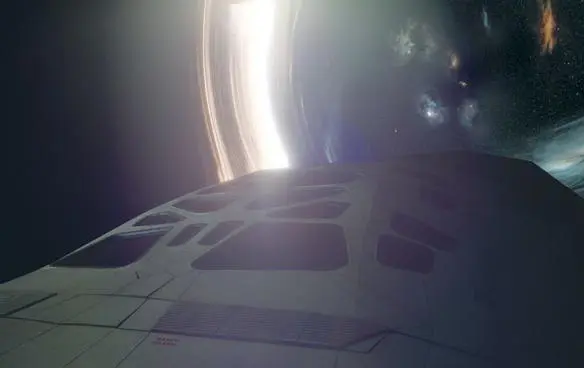
Fig. 28.3. The universe above, surrounded by the accretion disk, as seen by Cooper inside Gargantua, looking upward across his Ranger’s fuselage. Gargantua’s shadow is the black region on the left. [From Interstellar , used courtesy of Warner Bros. Entertainment Inc.]
Cooper can also overtake stuff that’s infalling more slowly than he. This may explain the white flakes that hit and bounce off his Ranger in the movie.
Rescued by the Tesseract

In my science interpretation, as the Ranger nears the outflying singularity, it encounters mounting tidal forces. Cooper ejects just in the nick of time. Tidal forces tear the Ranger apart. Visually, it splits in two.
At the singularity’s edge the tesseract awaits Cooper—placed there, presumably, by bulk beings (Figure 28.4).
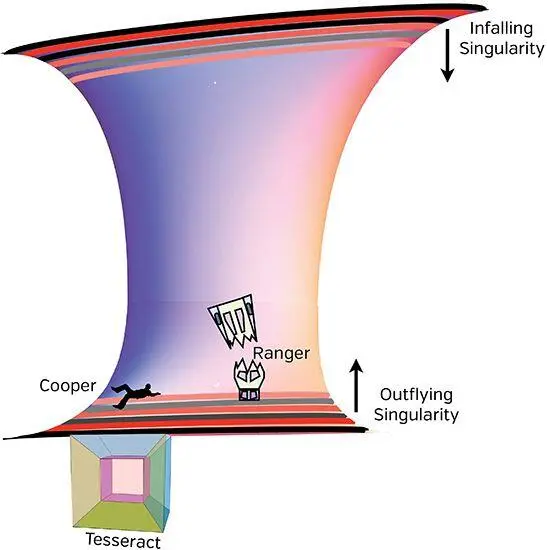
Fig. 28.4. An icon representing Cooper about to be scooped up by the tesseract at the edge of the singularity. The Ranger icon and Cooper icon are drawn far, far larger than they should be, so you can see them, and are drawn two-dimensional, since one space dimension is suppressed from this diagram.
In Interstellar , the entrance to the tesseract is a white checkerboard pattern. Each white square is the end of a beam. Cooper, entering the tesseract, falls down a channel between beams, dazed and confused, lashing out at what appear to be bricks along the channel wall, but turn out to be books. The channel leads to a large chamber, where he floats and struggles, gradually getting oriented.
The chamber is Christopher Nolan’s unique take on one three-dimensional face of the four-dimensional tesseract, enhanced by Paul Franklin and his visual-effects team. The chamber and its environs are remarkably complex. Seeing them for the first time, I felt as disoriented as Cooper, even though I know what a tesseract is. Chris and Paul had enriched the tesseract so greatly that I only fully understood after talking with them.
Here’s what I know—and what I learned, filtered through my physicist’s eyes. I begin with the standard, simple tesseract, and then I build up to Chris’s complexified tesseract.
From Point to Line to Square to Cube to Tesseract

A standard tesseract is a hypercube, a cube in four space dimensions. In Figures 29.1 and 29.2 I walk you through what this means.
If we take a point (top of Figure 29.1) and move it in one dimension, we get a line. The line has two faces (ends); they are points. The line has one dimension (it extends along one dimension); its faces have one less dimension: zero.
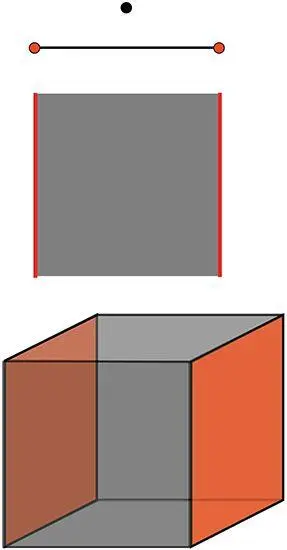
Fig. 29.1. From point to line to square to cube.
If we take a line and move it in a dimension perpendicular to itself (middle of Figure 29.1), we get a square. The square has four faces; they are lines. The square has two dimensions; its faces have one less dimension: one.
If we take a square and move it in a dimension perpendicular to itself (bottom of Figure 29.1), we get a cube. The cube has six faces; they are squares. The cube has three dimensions; its faces have one less dimension: two.
The next step should be obvious, but to visualize it, I need to redraw the cube as you would see it if you were up close to one of the orange faces (top of Figure 29.2). Here the original square (the small, dark orange one), when moved toward you to form the cube, appears to enlarge to become the cube’s front face, the outer square.
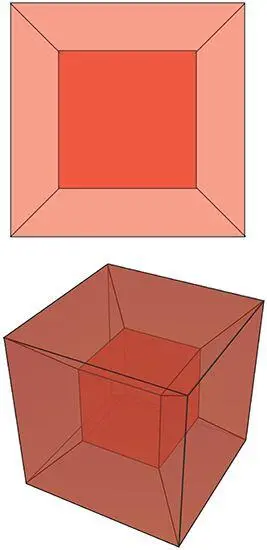
Fig. 29.2. From cube to tesseract.
If we take a cube and move it in a dimension perpendicular to itself (bottom of Figure 29.2), we get a tesseract. The picture of the tesseract is analogous to the one above it, of the cube: It looks like two cubes, inside each other. The inner cube has expanded outward, in the picture, to sweep out the four-dimensional volume of the tesseract. The tesseract has eight faces; they are cubes. (Can you identify and count them?) The tesseract has four space dimensions; its faces have one less dimension: three. The tesseract and its faces share one time dimension, not shown in the picture.
The chamber Cooper enters in the film is one of the tesseract’s eight cubical faces, though, as I said earlier, modified in a clever, complex way by Chris and Paul. Before explaining their clever modifications, I use the standard, simple tesseract to describe my interpretation of the movie’s early tesseract scenes.
Cooper Transported in the Tesseract

Because Cooper is made of atoms held together by electric and nuclear forces, all of which can exist only in three space dimensions and one time, he is confined to reside in one of the tesseract’s three-space-dimensional faces (cubes). He can’t experience the tesseract’s fourth spatial dimension. Figure 29.3 shows him floating in the tesseract’s front face, whose edges I delineated by purple lines.
Читать дальше
